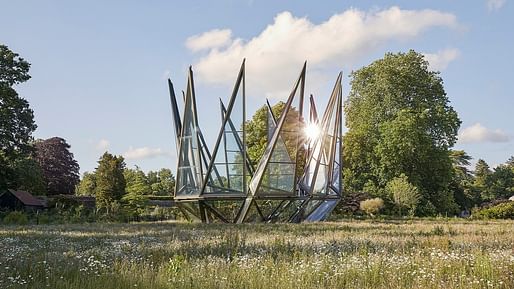
Heatherwick Studio has unveiled a new small greenhouse project for the National Trust’s historic Woolbeding Gardens estate in West Sussex, England.
Taking the form of a sheltering flower bud, the structure comprises ten steel ‘sepals’ operated by a hydraulic mechanism that takes about four minutes to open. Its 141-square-meter (1,517-square-foot) interior contains a variety of subtropical Chinese flora and is surrounded by a new Silk Route Garden, which invites visitors on a 12-step journey through each of the trade corridor’s different geographic regions.
The studio says it was inspired by Victorian-era terrariums, and the structure took a total of six years to develop. The project was commissioned by the estate’s longtime owner, Stewart Grimshaw, who, along with his partner, Sainsbury’s heir Simon Sainsbury, had previously inaugurated sculptural interventions by William Pye and Philip Jebb into their sprawling 1,100-acre gardens, which former British Prime Minister Benjamin Disraeli once declared “the loveliest valley in the land.”

“I think it also speaks of our need to keep creating amazing pasts. Weaving contemporary inventions into the fabric of historic settings and having the confidence to let each one speak to the other,” Thomas Heatherwick said in a statement.
“The Woolbeding project has been an incredible example of technical and horticultural design brilliance. It’s been fantastic working with Heatherwick Studio, with [Stewart] and the whole project team, and it’s been an inspiring journey that we hope will equally inspire our visitors,” the Trust’s Head of Garden and Parks, Andy Jasper, added. “It is a chance not only to discover the many stories of owners, gardeners, and designers who left their mark but also experience the excitement and wonder of new designs and ideas.”
1 Comment
The planting seems secondary to the technological aspects of the interesting kinetic enclosure.
Block this user
Are you sure you want to block this user and hide all related comments throughout the site?
Archinect
This is your first comment on Archinect. Your comment will be visible once approved.